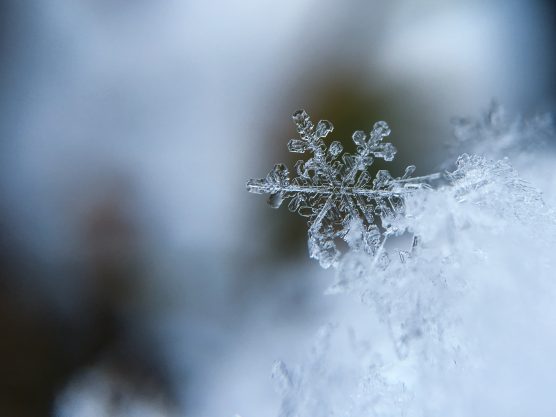The top Los Angeles County Health Officer has extended and expanded a cold weather alert for areas of the county due to the National Weather Service’s forecast for low temperatures into next week.
Wind chill temperatures are expected to dip below 32 degrees Fahrenheit in these areas:
* Antelope Valley – Thursday, December 27 through Thursday, January 3
* Los Angeles County Mountain areas – Thursday, December 27 through Thursday, January 3
* East San Fernando Valley- Friday, December 28 through Saturday, December 29
* West San Gabriel Valley- Saturday, December 29
* East San Gabriel Valley- Sunday, December 30
The NWS has a wind advisory in effect for the Santa Clarita Valley through Saturday, December 29 at 3 p.m. Wind is expected from the northeast at 20 to 30 mph with gusts up to 40-50 mph.
SCV low temperatures will range from the mid-30s to the mid-40s through Monday night, the service predicts.
“Children, the elderly, and people with disabilities or special medical needs are especially vulnerable during cold weather. Extra precaution should be taken to ensure they don’t get too cold when they are outside,” said Muntu Davis, MD, MPH, Los Angeles County Health Officer.
“There are places where people can go to stay warm, such as shelters or other public facilities,” Davis said. “We also want to remind people not to use stoves, barbeques or ovens to heat their homes due to the risk of carbon monoxide poisoning.”
Take precautions to protect yourself from the cold:
* Dress in layers of warm clothing if you plan to be outdoors.
* Protect head, hands and feet from the cold by wearing a hat, scarf, gloves, and socks.
* Check on and help family members, friends and neighbors with limited mobility and limited access to heat, such as seniors or those who are ill. Check on them frequently.
* If you have pets, bring them indoors and do not leave them outside overnight.
Take shelter during peak cold times:
* If you don’t have a heater in your home, visit indoor public facilities such as shopping malls, libraries or senior centers.
* The Los Angeles Homeless Services Authority has a Winter Shelter Program available for those who need shelter. Locations and transportation information are online at https://www.lahsa.org or by calling 2-1-1.
Santa Clarita Valley Emergency Winter Shelter
The nonprofit Bridge to Home operates the emergency winter shelter in the Santa Clarita Valley and provides other services to homeless individuals and families. The shelter is located at 23031 Drayton Street, Saugus 91350, and opens at 7 p.m. seven days a week. For more information, call 661-254-4663 or visit www.btohome.org.
Symptoms of cold weather exposure
People exposed to cold weather for prolonged periods can lose body heat and develop hypothermia. Symptoms vary depending on how long you are exposed to cold temperatures. Early symptoms of hypothermia include shivering, fatigue, loss of coordination, and confusion and disorientation. Late symptoms of hypothermia include no shivering, blue skin, dilated pupils, slowed pulse and breathing, and loss of consciousness.
People exposed to extremely cold weather conditions, such as places where it snows and where freezing occurs, may be at risk of frostbite. Frostbite is a bodily injury caused by freezing that results in loss of feeling and color in affected areas. The most common affected areas are the nose, ears, cheeks, chin, fingers, or toes.
Gently warm the person and seek immediate medical care if you believe someone is showing signs of hypothermia or frostbite.
Prevent carbon monoxide poisoning when heating your home
* Only use approved heaters, such as electric or natural gas heaters and fireplaces. Never use stoves, barbecues and ovens to heat your room or home, as these appliances can produce a deadly gas known as carbon monoxide that can collect inside your home.
* Install a carbon monoxide detector in your home to reduce the risk of poisoning.
* If you use an outdoor generator at home, place it at least 10 feet away from all doors and windows to avoid exhaust gases entering the home.
Carbon monoxide poisoning can cause shortness of breath, headaches, muscle and joint pain, and nausea. Exposure to high levels of carbon monoxide could lead to death within minutes. Those suffering from carbon monoxide poisoning should be taken outside, into fresh air, immediately, and should be taken to an emergency room for immediate medical treatment.
LA County residents and business owners, including people with disabilities and others with access and functional needs may also call 2-1-1 or visit www.211la.org for emergency preparedness information and other referral services 24 hours a day and seven days a week. For the deaf and hard of hearing, call the TDD line at 1-800-660-4026.
Like this:
Like Loading...
Related





 Tweet This
Tweet This Facebook
Facebook Digg This
Digg This Bookmark
Bookmark Stumble
Stumble RSS
RSS

























REAL NAMES ONLY: All posters must use their real individual or business name. This applies equally to Twitter account holders who use a nickname.
0 Comments
You can be the first one to leave a comment.